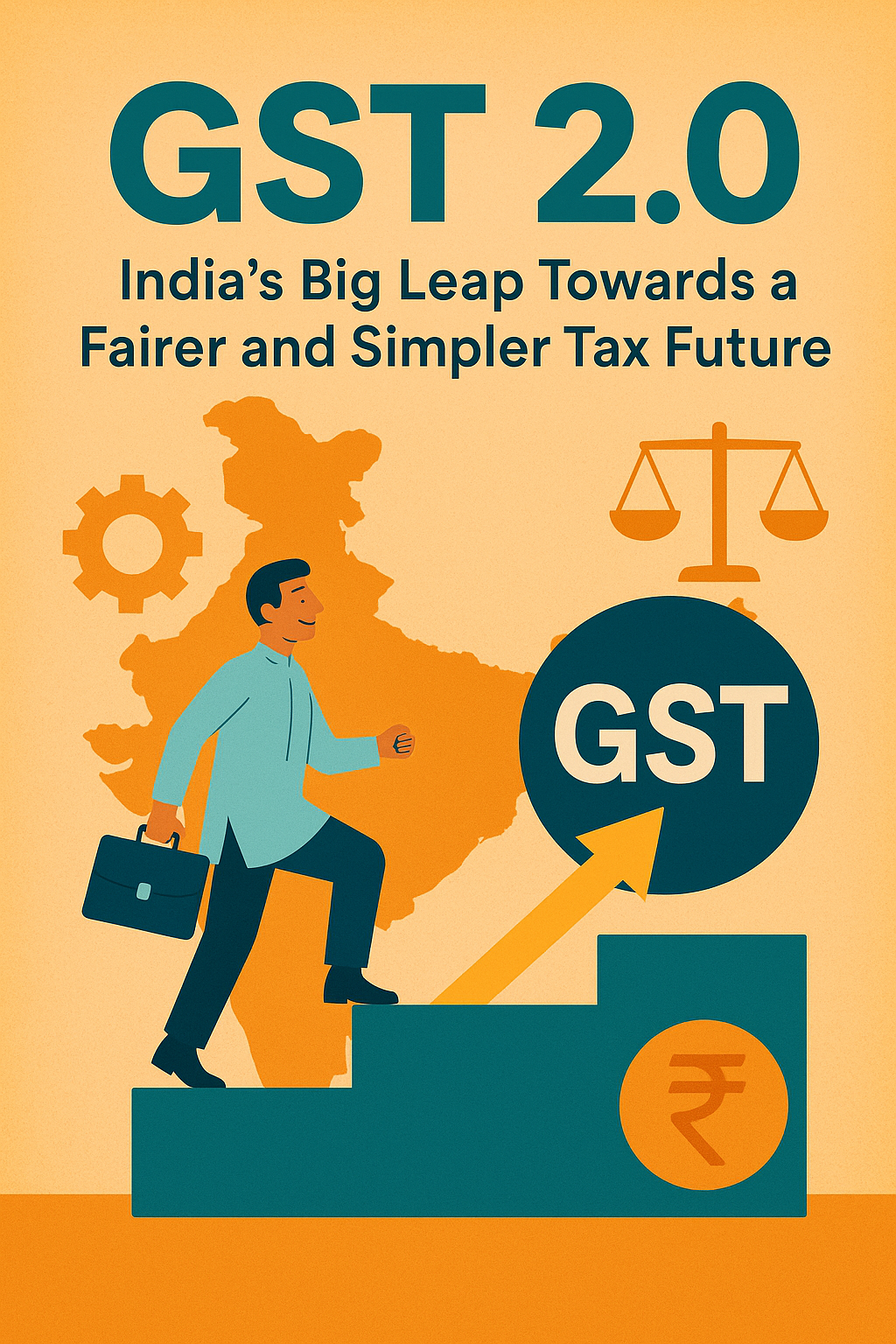The advent of the Goods and Services Tax (GST) in 2017 transformed India’s tax system by consolidating various indirect taxes into a single framework. This significant reform sought to simplify tax administration, improve transparency, and stimulate economic growth. Through the removal of intricate tax structures and the reduction of compliance burdens, GST has profoundly influenced businesses, consumers, and governmental revenue strategies.
What is GST?
GST is an indirect tax levied on the supply of goods and services, ensuring that taxation takes place at the point of consumption instead of production. This destination-based tax system avoids tax cascading and fosters a consistent taxation model throughout the country.
A key characteristic is the dual-tax structure, where both the Central and State governments impose taxes on intra-state transactions. This joint initiative has improved tax collection efficiency, decreased compliance costs, and aided in maintaining economic stability.
Different Types of GST in India:
To facilitate tax collection, GST is divided into four categories, each serving a unique function:
1. Central Goods and Services Tax (CGST)
CGST is imposed by the Central Government on intra-state transactions. When a vendor within a state makes a sale, half of the entire GST amount is allocated to the Central Government. For instance, if a retailer in Gujarat sells a product for ₹10,000 at an 18% GST rate, the total tax of ₹1,800 is evenly divided—₹900 as CGST and ₹900 as SGST.
2. State Goods and Services Tax (SGST)
SGST, collected by the State Government, similarly applies to intra-state sales. It replaced numerous state taxes, creating a unified tax system and alleviating confusion for businesses.
3. Integrated Goods and Services Tax (IGST)
IGST is applied when goods or services are transported between states, ensuring a coherent tax structure for interstate commerce. The Central Government collects IGST and subsequently allocates it among the states. For example, if a company in Maharashtra sells a product to a customer in Tamil Nadu, IGST is applied instead of CGST and SGST.
4. Union Territory Goods and Services Tax (UTGST)
For Union Territories such as Chandigarh, Lakshadweep, and Andaman and Nicobar Islands, UTGST replaces SGST to guarantee consistent tax enforcement across these areas.
Advantages and Challenges of GST
GST has been transformative, providing several advantages while also introducing certain difficulties.
Benefits of GST Implementation
By replacing various indirect taxes, GST has minimized complexities in tax compliance, facilitating smoother business operations.

GST functions through a digital platform (GSTN), ensuring every transaction is documented, thus decreasing tax evasion.

With the removal of cascading taxes, the overall expenses for goods and services have declined, enhancing the global competitiveness of Indian businesses.

The launch of composition schemes and reduced tax obligations has enabled small businesses to thrive and grow.
Challenges of GST Implementation
A number of businesses encountered operational challenges during the shift to the new tax system, including technical problems and compliance obstacles.

Small enterprises are required to submit monthly and quarterly returns, necessitating digital proficiency and additional financial resources.

In certain sectors, especially luxury goods and services, GST has resulted in higher tax rates, influencing consumer demand.

States now rely on the GST Council for revenue distribution, affecting their financial autonomy.
Key GST Compliance Requirements
For businesses to operate legally under GST, they must follow specific compliance guidelines.
1. GST Registration
Companies with annual earnings exceeding ₹40 lakh (or ₹20 lakh for service providers) are required to obtain a GST Identification Number (GSTIN) from the GST portal.
2. GST Return Submission
Submitting GST returns requires reporting sales, purchases, input tax credits, and tax liabilities. Businesses need to file returns monthly, quarterly, or annually based on their revenue.
3. GST Payments
Taxpayers are required to clear their GST obligations by the designated deadlines to avoid penalties. Payments can be carried out online through net banking, UPI, or authorized banks.
Step-by-Step Process for GST Compliance
1. GST Registration Procedure
• Access the GST portal and apply for registration.
• Provide necessary documentation such as PAN, Aadhaar, and business information.
• After verification, obtain a unique GSTIN for tax-related transactions
2. Filing GST Returns
• Keep precise records of sales and purchases.
• File tax returns electronically on the GST portal.
• Make sure to complete payments on time to prevent penalties.
3. Making GST Payments
• Create a GST payment challan on the portal.
• Choose to pay using online banking options or offline methods.
• Retain receipts for auditing and future reference.
Conclusion: The Future of GST in India GST has revolutionized India’s taxation system, offering a straightforward and transparent framework that benefits both businesses and consumers. Although initial hurdles exist, its long-term benefits considerably surpass the challenges. To succeed in this changing tax environment, businesses must remain updated, adhere to GST regulations, and utilize its advantages for sustainable development. As the GST framework continues to evolve, it is expected to further fortify the Indian economy, creating a more effective and business-friendly atmosphere.
BY….
MUSKAN RANA,
BA.LLB( HONS) 4TH YEAR
LOVELY PROFESSIONAL UNIVERSITY




